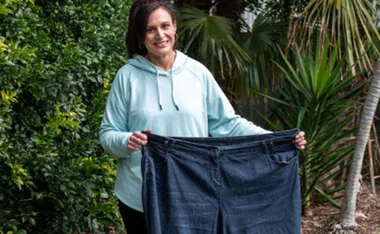Australia is in the grip of an epidemic: almost half the adult population will suffer from a mental illness at some time in their lives. Anxiety and depression are at the top of the list, but modern treatments can do much to alleviate the pain, writes Michael Sheather.
At the height of her life-long battle with anxiety and depression, Maddie Kennedy’s world often shrank to the space of within her bedroom walls. During her workday week, she presented a face of happiness and stability to everyone who knew her, but in the dead of night and on weekends, when her truck driver husband was on the road, Maddie succumbed to the fear and chaos that constantly threatened to overwhelm her.
“I spent most of my life hiding my condition,” says Maddie, 42, who has suffered both depression and a complex form of anxiety obsessive-compulsive disorder (OCD) since she was four.
“I lived in constant fear that something bad would happen to me, to my family, to my husband, and that somehow it would all be my fault.”
Maddie is one of millions who suffer from anxiety and depression, the most prevalent mental illnesses in Australia. These conditions reach deep into the Australian psyche, affecting as many as 2.5 million people each year or roughly 10 per cent of the population.
Even more staggeringly, 45 per cent of Australians suffer a mental illness at some time in their lives. And, according to the statistics, women report these illnesses at twice the rate of men.
Anxiety, a condition characterised by persistent, excessive worry, is the most widespread, with 2.3 million sufferers. The most common form is post-traumatic stress disorder, followed in descending order by social phobia, generalised anxiety disorder (GAD), agoraphobia, panic disorder and OCD.
“Women tend to worry a lot more than men,” says psychiatrist Professor Ian Hickie, one of Australia’s mental health commissioners and the director of the Sydney University Brain and Mind Research Institute.
“It’s women who are at the epicentre of the family, who take the emotional burdens of the family on their shoulders.
“And because they tend to have a better awareness of their own emotions and because they talk about them to friends and family, women seek help earlier, usually in their 30s, but men are often untreated until their late 40s and even their 50s. They bottle everything inside and end up drinking, often on their own, and that is very dangerous behaviour.”
Nobody is sure exactly what causes either anxiety or depression. Many believe the illnesses spring from interacting influences, including stressful circumstances, a traumatic event such as an accident or even child abuse, inherited predisposition, personality traits and socio-economic factors.
“We need to lose the stigma that is attached to mental illness,” says Professor Ian Hickie.
“It’s an illness and should be seen just like any other condition. We need to be in a place where we watch each other’s back. We need to have that awkward conversation … Are you okay? Do you need help? What’s the matter? What’s the next step?
“This is a massive problem simply because of the crippling emotional impact it has. Everyone knows someone who has a mental health problem and if you can’t point to someone who needs help, then you simply don’t know the people who are close to you.”
Read more of this story in the February issue of The Australian Women’s Weekly.












